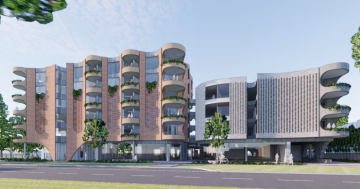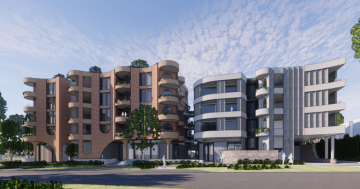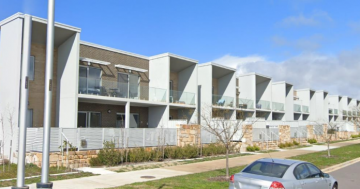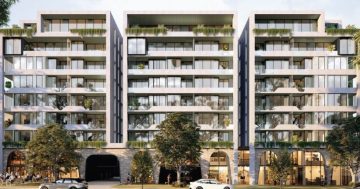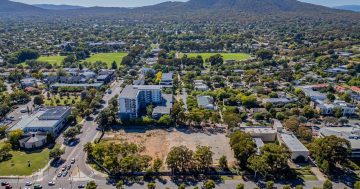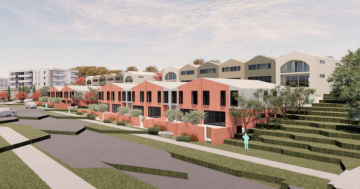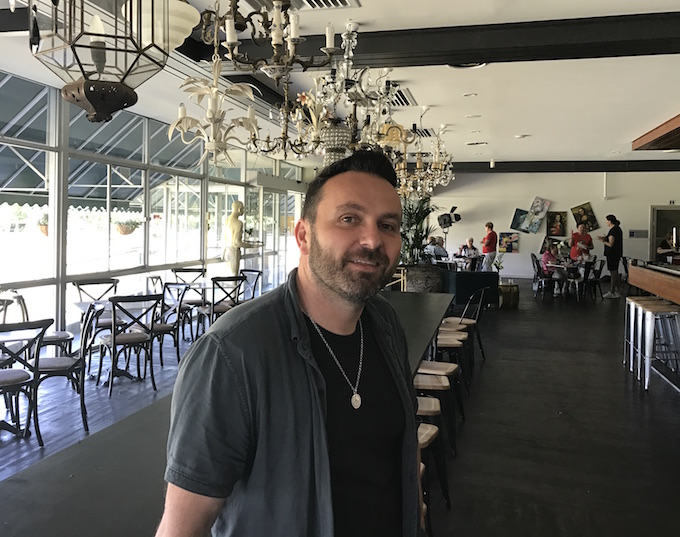
What would you like to see on the Braddon site that is currently home to the Canberra City Bowling Club? Townhouses or a mixed use development including features like parks, cafes, an outdoor cinema, a pool and food vans?
Property developer and operator of The Hamlet as well as new pop-up ’80s restaurant Bonkers Nik Bulum is keen to find out what RiotACT readers think of his ideas for the site. He has encouraged us to run a poll on the issue and to call for your thoughts via social media and in comments below.
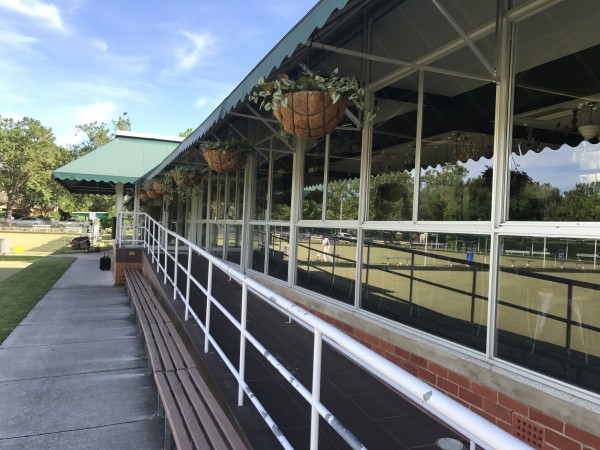
Mr Bulum’s family company, Bulum Group, bought the site earlier this year with a vision to develop it into a village-style precinct that could contain elements such as a bocce green, communal gardens, a function space, a boutique hotel, underground parking and even a chapel so that Canberrans could hold their wedding ceremonies and receptions on site.
None of these plans are locked in, and responses to this article and its attached poll will form part of Mr Bulum’s consultation with Canberrans on what the development should look like.
The developer has already put our opening questions to attendees at a consultation session on the redevelopment, and was sifting through the results when we met last week. Mr Bulum is working with urban planning and community engagement specialists Elton Consulting to canvas community ideas for the precinct before putting together a development application.
Retaining the site as it is is not an option, though some local residents have indicated they’d prefer that. Mr Bulum says everything is on the table within reason – transforming the space into 100% parkland wouldn’t be feasible for example, as it would send him bankrupt.
The developer’s original vision for the site was for an urban precinct along the lines of The Grounds of Alexandria in Sydney, which features a coffee research and education facility, artisan bakery and a permaculture garden of heirloom vegetables, herbs, fruit and flowers along with a small animal farm (see four photographs immediately below).
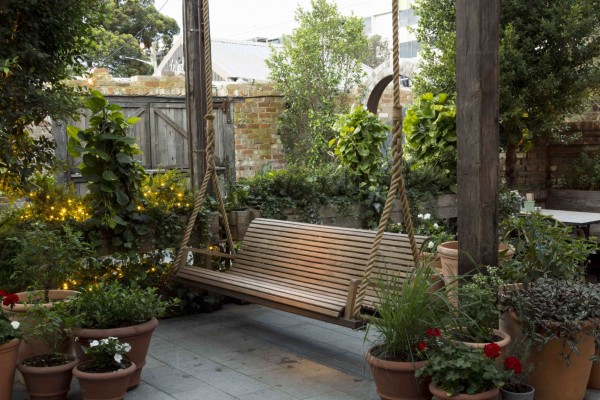
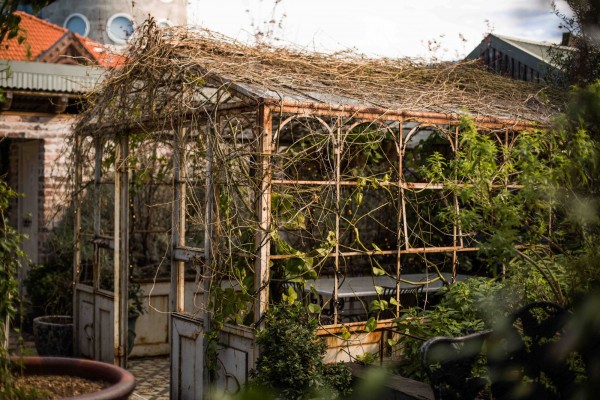
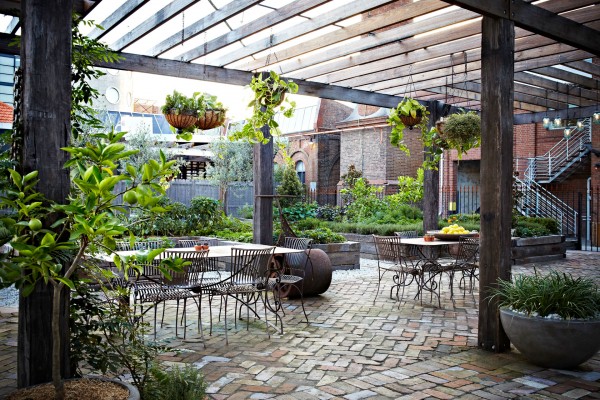
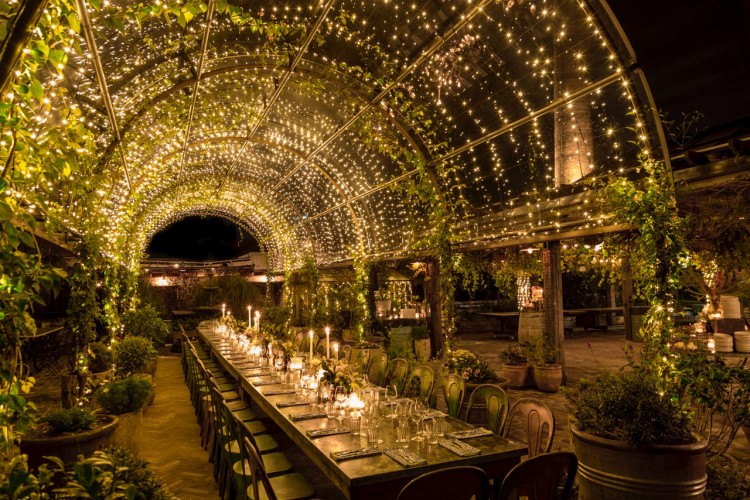
Having bought a block adjacent to the site upon which to build a house for himself, Mr Bulum has a vested interest in building something that will be unobtrusive for surrounding residents.
“I did have the idea of keeping one of the greens with a movie screen on it, so free movies at night, and you could come, sit down on the lawns like a picnic,” the developer says.
He also considered a spa, a small chapel and a function centre.
“It was all about celebration and resort sort of living, but in a classy, upmarket way, not snobby, where no one can access it,” he says.
“It was the difference to what Lonsdale St has to offer, more the grungy, gritty street, this was meant to be more the nice club.
“Anyway, that was my vision. I’m happy not to go with that if they want it to be townhouses.”
The developer is clearly frustrated by the possibility that Braddon residents might prefer a straight housing development.
“What they don’t realise is, I came here to do something different to your normal developer, and activate a space for community, right?” he says.
“But they are interested in me being ‘the greedy developer’ and doing more townhouses and apartments.”
He says if townhouses are the community’s preference, he will come up with designs for a townhouse development and bring that back for their consultation within a few months. If the preference is for a mixed use development, he’ll put together designs for that concept and present these.
“I’ll work with what they want to see,” Mr Bulum says.
If that’s townhouses?
“I’ll go and do more of this creative precinct thing elsewhere,” he says.
Mr Bulum has been criticised over some of his ideas for the project, with some residents believing the concepts were locked in prior to consultation. But the developer explains that sharing his vision was about getting the conversation started.
“When I’m talking to you, if I don’t throw ideas around, what kind of discussion are we going to have?” he says.
In a media interview earlier in the year, Mr Bulum threw up some 30 ideas for the site.
“Obviously thirty things aren’t going to fit here, but they [residents] really latched onto that,” he says.
“They’re like, ‘the greedy developer’s going to come in and he hasn’t even spoken to anybody, he’s just going to do this,’ and I’m like, I don’t even have plans yet.
“You can’t make people happy, though. The other day at the consultation, they came here expecting plans, and I said, ‘But if I had plans, you’d be angry, because it means that I planned it, but this is proof to you, I have not planned anything. I’m still sticking to my words that I’m going to consult you all’.”
Mr Bulum says the situation is crazy.
“You can never, never win,” he says.
“How many developers ask the community to decide the fate of land? None. No one does that. So it’s like I’m giving them a nice opportunity.”
He says friends have criticised him for being so consultative, and for giving start-up businesses cheap rental deals on Lonsdale Street.
“But that’s not me,” he says.
“I do want to do things a little bit differently.
“That’s been the whole way I’ve always done the Traders, the Hamlet, I love that activation.”
He said that when he first began developing in Lonsdale St, he opened a retail outlet so he could chat with patrons and residents.
“I’ve come into an area and I want it to work,” he says.
“This is why when people attack me and try and dirty my name, I get really hurt, because I am completely the opposite.
“A lot of these objections were hurtful.”
Residents who live in the area immediately surrounding the site and in neighbouring suburbs have expressed their concerns about the impact the project will have on the Ainslie Primary School, which is opposite the bowls club, the nearby childcare centre and on the daily lives of residents generally through increased traffic and activity.
They fear their quiet suburb will become akin to Lonsdale Street (which is home to several Bulum Group developments), attracting night drinkers and possibly even drug users.
But the developer says he tries to do things “in the good way”. He says he is anti-drugs and far from wanting to remove trees, is passionate about protecting them.
“If I had a criminal record or had a history with drugs, I get where the rumours [that his plans would attract drug users] can come from, but that’s not the case,” he says.
One resident said during the consultation that she wanted to see neither townhouses or a mixed use development on the site.
Mr Bulum expressed his disappointment at her view.
“You really wanted me to do a consultation, I’ve done it, and I’m looking forward to your feedback and you’re just donkey voting, basically,” he said.
“If you care about this area, put something on there that I can work with.
“Do you really want a derelict site across the road?”
Mr Bulum says the woman ended up suggesting a retirement village for the site, which, given the ageing population, was an idea with potential.
While plans for the development are made, the bowling club members will continue to use the space. They’ll probably move on in late 2017, but Mr Bulum is open to them staying longer if they want to. Several of them were meeting over tea and coffee in the clubhouse during the RiotACT’s visit. Bowls organiser Mike Woolley said the members had a good relationship with Mr Bulum, who is often on site now Bonkers, which he runs with Joelle Bou-Jaoude and Sascha Brodbeck of Brodburger in the old clubhouse, is open.
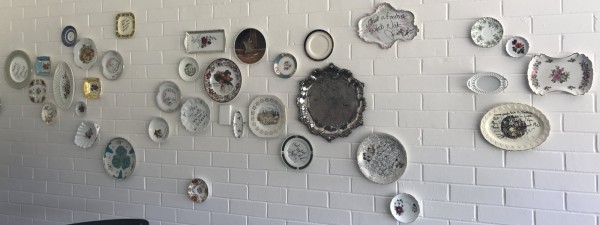
With a name that is a nod to Lewis Carroll’s Alice in Wonderland (“You’re mad, bonkers, completely off your head. But I’ll tell you a secret. All the best people are.”), the restaurant’s arrival has given the old bowls clubhouse a makeover, providing a hip cafe space minus the former poker machines. It features a row of mis-matched chandeliers hanging from the ceiling, vintage china on the walls, a map where visitors can mark the countries they’ve visited around the world and, somewhat controversially, a space plastered with the 78 responses the ACT Government received when Mr Bulum and his fellow restaurateurs applied for a liquor licence for Bonkers.
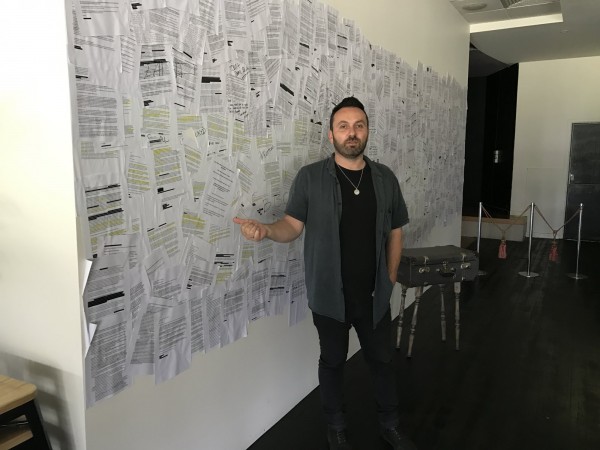
The developer decided to post the responses on the wall in the interest of interaction. Names of those who submitted them had been blacked out by ACT Government staff before they were released to the Bonkers team, and the information was available publicly online in any case, so there was no concern about privacy.
“We put all our bad stuff up there … we were kind of offended so we tried to turn this around,” Mr Bulum said.
‘We thought, you know what, these people have the right to object and make a complaint or put their concerns. We put them up on the wall, now we say to people, ‘If you don’t like that wall, grab a pen and say ‘I find this wall offensive’.’”
Mr Bulum pointed out some specific posts to the RiotACT, including one that suggested Bonkers was likely to attract “a younger and childless demographic” who “research indicated” were likely to “consume large amounts of alcohol” and as a result participate in “risky” activities. “For example they are less likely to show self-control,” the responder wrote.
Mr Bulum has been particularly upset by the childless reference.
“If you’re childless, you’re welcome here,” he says.
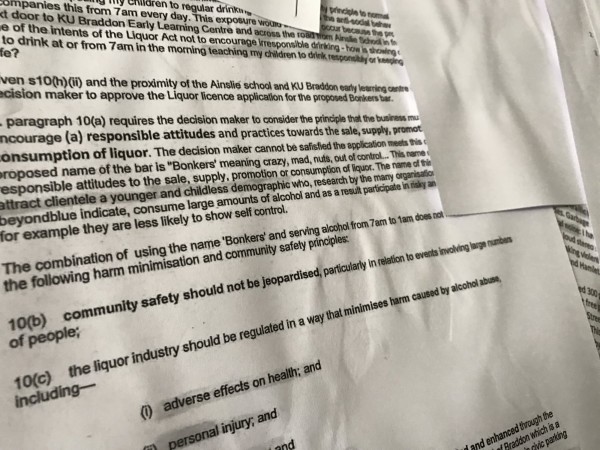
Asked whether posting the responses on a wall and inviting Bonkers patrons to add their own notes to them with felt tip pens was mocking of the original writers, Mr Bulum says, “We’re the ones who felt mocked.”
The tone of the liquor licence application responses in general was negative, perhaps reflecting the reaction of residents to a street poster campaign in October and November which included the following along with details of how to write to the Commissioner for Fair Trading:
“Our quiet street is going to be turned into a nightmare. A bar called “Bonkers” is coming [sic]. It will be at the bowling club opposite this school… It wants to be licensed from 7am to 1am. There will be mobile food stalls as well, the Hamlet is moving in to the carpark so think drugs!!!
“The noise will be appalling. There will be empty beer bottles and screaming in our quiet streets and no doubt a massive increase in crime! You have until November 5th to complain to stop it.”
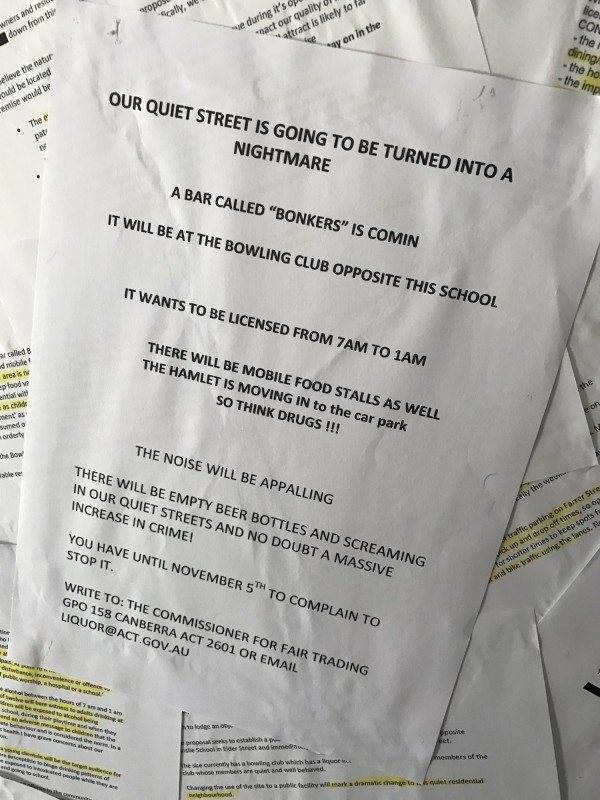
Mr Bulum describes the poster and related activity as a “hate campaign”. It was posted on trees in the street in which he will eventually live and currently works, as well as around the neighbouring childcare centre.
“Why am I sitting here getting attacked for caring about Canberra?” Mr Bulum asks.
“Let’s care about Canberra together, and work together.”
Bonkers is open Wednesday to Sunday for lunch and dinner, for breakfast on Saturday and breakfast and high tea on Sunday. Among the ’80s-themed menu items on offer are iced vovo milkshakes and macaroni and cheese pizzas. Families are welcome, Mr Bulum says, pointing to the special menu options for kids.
“The gambling’s out, it’s more child-friendly now,” he says.
“We want to use the old look but make it a bit more fun and quirky.”
Mr Bulum said some people had been scared of the name Bonkers because they thought it meant “bonking”.
“But I explained … they’re two different words … and I said, ‘You do realise it’s in a child’s book, Alice in Wonderland?’
“A name freaked a whole community out, because they thought that it meant insanity and drugs.”
The proprietors of Bonkers have worked the Alice in Wonderland theme in here and there, setting up a large, Mad Hatter’s Tea Party-style table in the centre of the restaurant. Mr Bulum says that in a subtle way, they’re playing up the Wonderland connection given the Queen of Hearts plays on bowling greens.
“We like the name Bonkers, and we’re not going to call it Alice, are we?” he says.
The developer says residents have been relieved when they’ve come to see the restaurant for themselves.
“They said, ‘You should’ve explained it to us’,” Mr Bulum says.
“But what am I going to explain? A word from a children’s book?”
The restaurant will operate for around a year, until the bowlers head out to their new home at Gungahlin Lakes and redevelopment begins.
Among the ideas Mr Bulum has for the redevelopment that will replace Bonkers and the bowls club is underground car-parking to keep traffic issues to a minimum, a pool and a walkway through to connect Farrer St and Elder St.
He has faced criticism for the pool concept, which he says would be the sort of resort-style pool that creates ambience when dining alongside it among leafy surrounds like those of Canberra’s Hyatt Hotel.
“I wasn’t opening Wet & Wild,” he says.
The Bulum Group’s community survey asked participants who would prefer a mixed use development to townhouses to select a favourite option for possible inclusion from this list: pocket park, outdoor cinema, landscaping, cafe, seating and shade, boutique shops, restaurant, day spa, recreational space, function space, food vans.
For both the mixed use and townhouse options, the survey provided participants with the opportunity to choose between preferred materials they’d like to see used in the development, including the options of concrete, brick, textured concrete, timber, zinc cladding, travertine stone, green wall, corten steel or “other suggestions”.
Mr Bulum will now wait for Canberra’s verdict.
“If they want townhouses, I’ll go work on a townhouse plan,” he says, pointing out, though, that the development has the potential to provide services for all Canberrans, which is why he’s keen to read the responses of RiotACT readers to his ideas for the site.
“I’m sensitive to the street, but the street doesn’t own this site, it’s Canberra. We all have every right to this site, don’t we,” he says, adding that his vision would allow all Canberrans access to the space to hold events or relax in the precinct.
“If it’s a townhouse site, it locks everyone out.”
What would you like to see on the old bowls club site at Braddon? Let us (and Mr Bulum) know in the comments below and by responding to our polls.
The Canberra City Bowls Club is zoned under the Territory Plan as CZ6 – Leisure and Accommodation, which means the following objectives apply:
a) Provide for the development of entertainment, accommodation and leisure facilities for residents of and visitors to the ACT and surrounding region
b) Protect leisure and accommodation uses from competition from higher order commercial uses, and encourage activities that enhance the region’s economic diversity and employment prospects
c) Ensure leisure and accommodation facilities have convenient access to public transport
d) Protect the amenity of nearby residential areas, with regard to noise, traffic, parking and privacy
e) Ensure the location of facilities, and their design and landscaping is compatible with environmental values
f) Ensure that the bulk, scale, size, design and landscaping of development is compatible with the surrounding landscapeg) Encourage activity at street frontage level and provide an appropriate level of surveillance of the public realm
And the following uses are permitted:
Aquatic recreation facility
Outdoor recreation facility
Car park/camping ground
Overnight camping area
Club
Parkland
Commercial accommodation
Pedestrian plaza
Community use
Place of assembly
Consolidation
Public transport facility
craft workshop
Restaurant
Development in a location and of type identified in a precinct map as additional merit track development
Shop
Drink establishment
Sign
Drive-in cinema
Subdivision
Group or organised camp
Temporary use
Indoor entertainment facility
Tourist facility
Indoor recreation facility
Varying a lease (where not prohibited, code track or impact track assessable)
Minor road
Zoological facility












